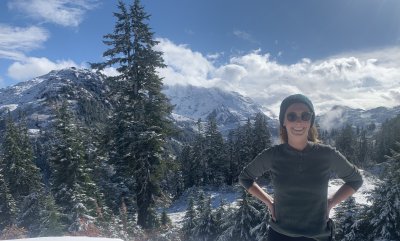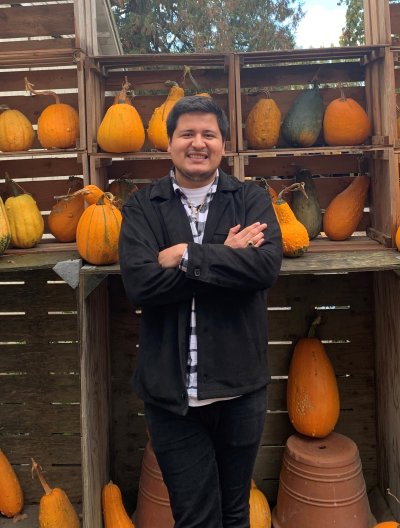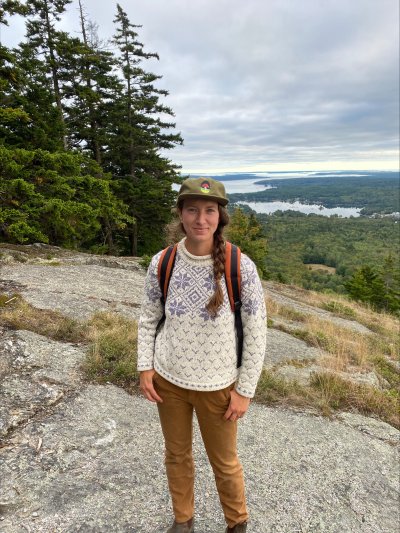Research Recap for Feb. 2, 2023
In this week's Research Recap, we have have three graduate students from three different colleges at Western, each sharing their important work. For in-depth stories on research at Western, go to Gaia, the university's online journal of research and scholarship, at https://medium.com/gaia-wwu, and follow @WWUResearch on Twitter.
Miguel Gonzalez Ramirez - Master's in Teaching
Miguel Gonzalez Ramirez, a second-year Master's in Teaching student, is learning that the biggest successes as a teacher don't always happen at the classroom level, but rather at the individual level.
“[Teaching] is the care and nurturing of each student,” Gonzalez Ramirez, who plans to teach history, said. “It’s cool to reach the whole class — but it’s a very individualized process.”
In high school, the history classroom was one of the places where Gonzalez Ramirez felt the safest. Now he strives to build safe and supportive environments in the classroom during practicum and as a mentor to undergrads in Woodring’s Office of Diversity, Recruitment, and Retention.
During Gonzalez Ramirez’s first two quarters, he worked with students at Shuksan Middle School in Bellingham. Now, he’s at Ferndale High School, collaborating with a teacher in civics, AP government, and world history classes.
Support from Woodring College faculty is a key part of Western’s MIT experience, and Gonzalez Ramirez has benefited from the guidance of his professors and his advisor, Associate Professor of Secondary Education A Longoria.
“They want to make sure that what we're learning in class can be applied to our practicums so we’ll feel ready to be out there by ourselves,” Gonzalez Ramirez said.
In addition to his studies, Gonzalez Ramirez served as co-chair of the Latinx Student Union and helped start Latinx Men in Higher Education, a new student group, which seeks to build community, address issues like toxic masculinity, and provide professional development opportunities.
Part of Gonzalez Ramirez's desire to teach is to help Latinx students overcome the cultural barriers that he, the son of Mexican immigrants, has faced.
“It took me until I got to Western to have an educator that looked like me, and I’d like to have [my students] see someone in a teacher role that has been through the same things they have,” he said.
When Gonzalez Ramirez graduates, he hopes to teach middle or high school. Whether in Bellingham or his hometown of Kent, he says, “I want to teach wherever I’m needed most.”
Olana Costa - Geology
Costa is a grad student of geology who studies the soundwaves made by lava as it flows into the ocean. When lava enters water, the water is superheated, resulting in explosions of steam. By analyzing the sound of these explosions during volcanic eruptions, Costa can determine how far lava travels underwater before it cools.
So what do lava water explosions sound like? “They’re basically quick, impulsive bubble bursts that last up to a couple seconds,” Costa explained. She hypothesizes these sounds accompany the formation of underwater lava streams, which can transport lava far offshore from an eruption.
Costa’s passion for geology began with visits to national parks during a gap year road trip. She channeled that passion into volcanology and hydroacoustics here at Western, where she works in close collaboration with her advisor, College of Science and Engineering Associate Dean Jackie Caplan-Auerbach.
When an enormous volcanic eruption occurred at Hawaii’s Kilauea volcano in 2018, Caplan-Auerbach and her team were there deploying ocean-bottom seismometers offshore. The seismometers were equipped with hydrophones, or underwater microphones, which recorded the explosions that Costa is now analyzing.
In Costa’s first year as a grad student, she met with Caplan-Auerbach frequently to develop a thesis proposal. Now in her second year, Costa is nearing completion of her project. The collaborative relationships with faculty, she says, have made all the difference.
“The professors in the geology department are some of the most enthusiastic people I’ve ever met. They always want to help their students,” she said, adding, “I’ve experienced so many things and have learned so much -- I feel like I’ve grown exponentially as a person."
The implications of Costa’s research are far-reaching -- steam explosions can be hazardous for anyone close by, and the way Kilauea's underwater lava solidifies has consequences for the stability of the volcano and that section of the Big Island.
Kailey Schillinger-Brokaw - Environmental Studies
Kailey Schillinger-Brokaw, a second-year master's degree student in environmental studies, received a Graduate Research and Creative Opportunities Grant from Western Washington University for research that uses maps to understand how native grassland cover has changed over time in the San Juan Islands.
As the saying goes, a picture is worth a thousand words. But according to Schillinger-Brokaw, a good map may be worth a lot more than that.
Native grasslands in the San Juan Islands are disappearing, a result of agricultural development, encroachment of trees and shrubs, and other factors. And conservation efforts face an obstacle: “The people who want to do that conservation and restoration work don’t have a solid understanding of where [the grasslands] were or when and how quickly they’ve disappeared,” Schillinger-Brokaw said.
That’s where maps come in. By plotting data from historical maps and aerial photographs using Geographic Information Systems (GIS) tools, Schillinger-Brokaw is creating a series of maps that clearly show how the extent and distribution of grasslands has changed — valuable information for conservationists.
Native grasslands on the San Juan Islands support high levels of biodiversity, host endemic species, control erosion and efficiently sequester carbon. They’re also important cultural landscapes, having been cultivated since time immemorial by the Coast Salish peoples, who traditionally maintained them with low intensity burns that prevented encroachment of trees and shrubs.
The grant Schillinger-Brokaw received for her work allowed her to visit the islands, meet with local ecologists and conservationists, and ground truth the data in her maps. Throughout the project, she has worked closely with her advisor, Associate Professor of Environmental Studies Aquila Flower.
Schillinger-Brokaw is using her graduate studies and research to learn invaluable skills for her conservation career and to address problems in the field.
“I think there’s a big disconnect between the folks that are doing research and science, and the communication of that in a way that’s readily accessible and understandable to the community as a whole,” she said.
That communication gap can be closed — and sometimes, all it takes is the right map.


